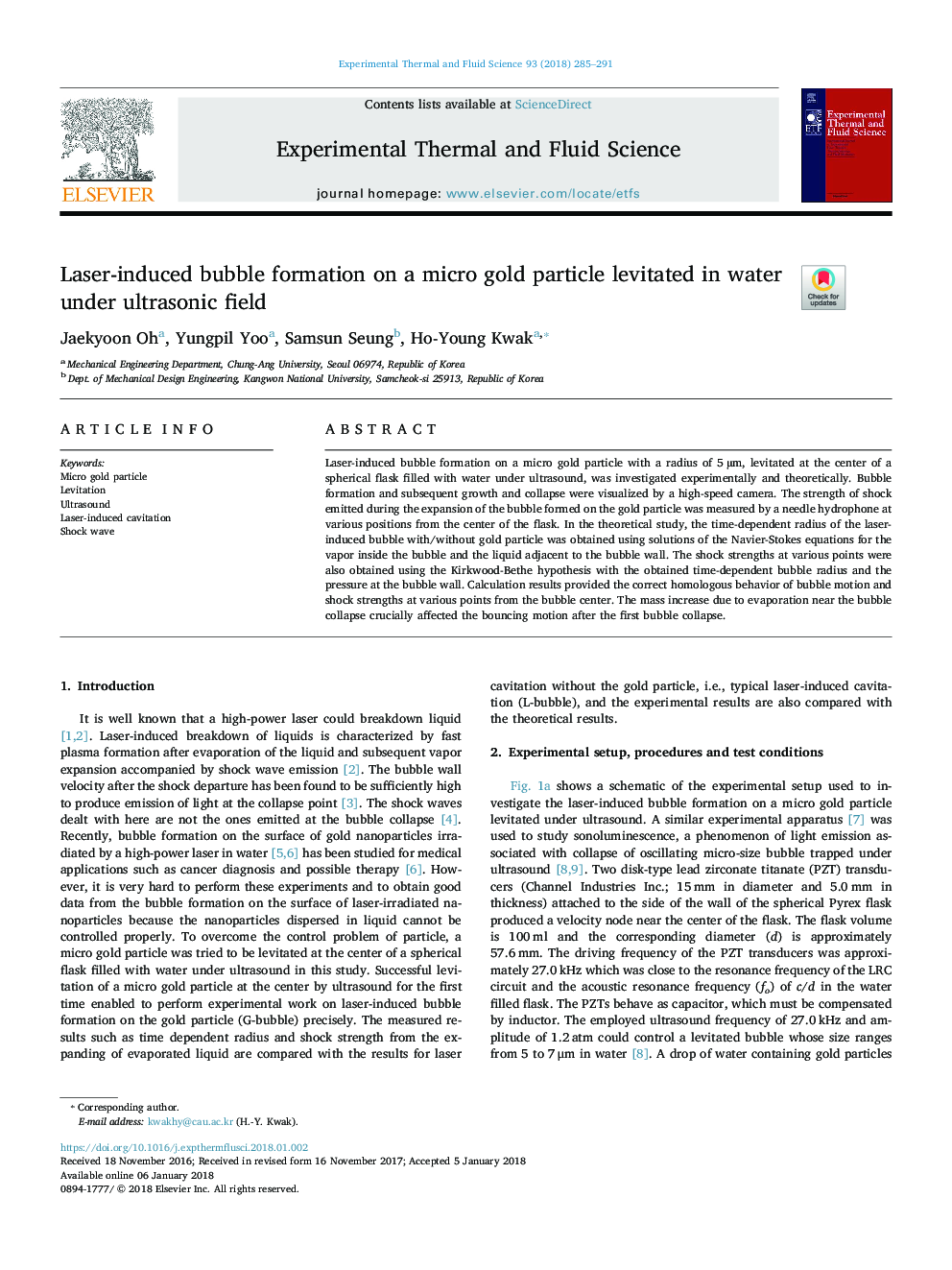| Article ID | Journal | Published Year | Pages | File Type |
|---|---|---|---|---|
| 7051813 | Experimental Thermal and Fluid Science | 2018 | 7 Pages |
Abstract
Laser-induced bubble formation on a micro gold particle with a radius of 5â¯Âµm, levitated at the center of a spherical flask filled with water under ultrasound, was investigated experimentally and theoretically. Bubble formation and subsequent growth and collapse were visualized by a high-speed camera. The strength of shock emitted during the expansion of the bubble formed on the gold particle was measured by a needle hydrophone at various positions from the center of the flask. In the theoretical study, the time-dependent radius of the laser-induced bubble with/without gold particle was obtained using solutions of the Navier-Stokes equations for the vapor inside the bubble and the liquid adjacent to the bubble wall. The shock strengths at various points were also obtained using the Kirkwood-Bethe hypothesis with the obtained time-dependent bubble radius and the pressure at the bubble wall. Calculation results provided the correct homologous behavior of bubble motion and shock strengths at various points from the bubble center. The mass increase due to evaporation near the bubble collapse crucially affected the bouncing motion after the first bubble collapse.
Keywords
Related Topics
Physical Sciences and Engineering
Chemical Engineering
Fluid Flow and Transfer Processes
Authors
Jaekyoon Oh, Yungpil Yoo, Samsun Seung, Ho-Young Kwak,
